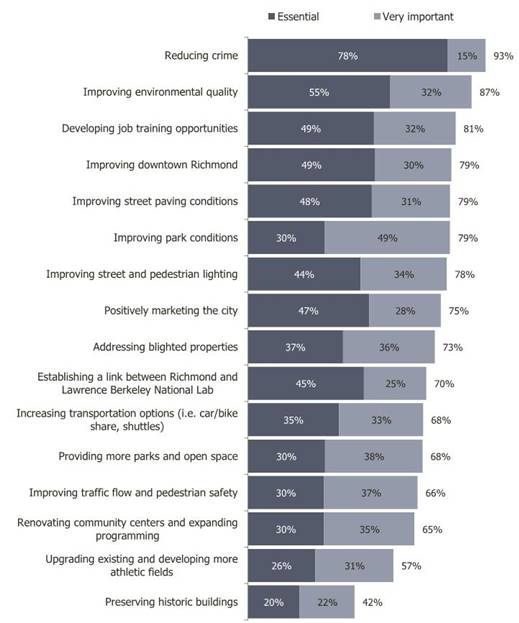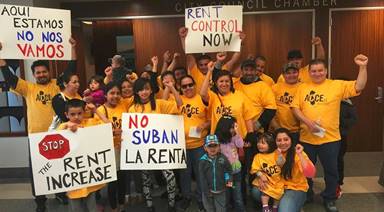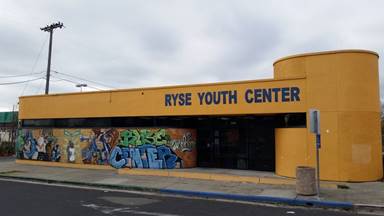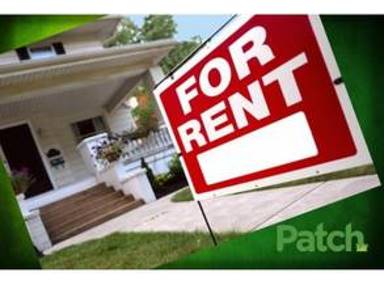In addition to the two initiatives that have already qualified for the June 7, 2016, election (Compensation Levels Initiative and General Plan 2030 Amendment – Riviera Project), backers of four other initiatives are circulating petitions, hoping to get enough signatures to qualify for the November 8, 2016, ballot. The four are:
- District Elections
- 2016 Richmond Kids First Initiative
- Charter Amendment – the Right to Vote on Development Subsidies
- Richmond Fair Rent, Just Cause for Eviction and Homeowner Protection Ordinance
Before you sign a petition, read the text and understand what you are signing. Don’t act based on what the petition circulator tells you or the excuse that it doesn’t hurt to put it on the ballot and let the voters decide. All of them on the surface appear to be attractive, or at least innocuous. But they are all flawed, some much deeper than others. Most have well-meaning motivations, and some are merely solutions looking for a problem. All of them will increase cost and bureaucracy to a City government that is facing serious budget challenges, and if passed, some will siphon resources from critical needs like crime prevention, libraries, parks and streets.
None of these initiatives directly addresses the priorities of Richmond residents (see below). It could be argued that some indirectly address the priorities, for example that additional services to kids reduce crime. However, it is more realistic to argue that they will have a negative impact on the ability of the City of Richmond to address the residents’ real priorities. They are each the product of a small group of people with their own ideas about what Richmond needs. Each of these lacks support from a majority of the City Council, hence the effort to implement them by initiative rather than City Council action.
Finally, most of the initiatives are very poorly and hastily drafted, making them vulnerable to legal attacks that will cost the City even more time and money.

Source: Richmond, CA 2015 Community Survey
District Elections
The District Election initiative is based on the premise that the City Council lacks “neighborhood representation.” It would require that Richmond be divided into six districts, each of which would elect its own City Council member. The City of Richmond population is approximately 107,000, and each district would have a population of about 18,000. These are not your mother’s neighborhoods. For comparison, each district would have a population the same as the City of Pinole, which has five City Council members. Currently, there are nominally 37 neighborhood councils, each representing a “neighborhood” in Richmond, some large and some small, some active and some inactive. With 37 neighborhoods and only six districts, it is clear that each neighborhood is not going to get its own city council member. In fact, 31 of the 37 identified neighborhoods (as defined by neighborhood councils) is going to lack “neighborhood representation” when the votes are counted and six City Council members are elected. See the map.
With each district the size of Pinole, the boundaries of are by necessity going to have to include multiple neighborhoods, typically combining areas that don’t feel like coherent neighborhoods. To get to a population of 18,000, for example, the district including Point Richmond and Brickyard Cove would probably have to include Santa Fe and the Iron Triangle. Either Nat Bates or Jael Myrick would have to find somewhere else to live if they want to stay in politics. Marina Bay would have to include Coronado and Pullman. Some areas, like Hilltop-Fairmeade have a population that appears to exceed 18,000, so it would have to divided into two districts, each of which might reach west into El Sobrante or east into Parchester or even North Richmond.
Most cities that have moved to district elections, some even by court order, have done so to correct racial or ethnic imbalances on their City Councils. Richmond does not have that problem. In fact, district elections may exacerbate a lack of diversity instead of improving it.
With each City Council member representing a single district, the fights over limited resources will make today’s City Council dysfunctions look like the good old days. It will pit neighborhood against neighborhood and make the vision of “One Richmond” a distant dream.
2016 Richmond Kids First Initiative
How could anyone not support the children? Any opponent risks being immediately labeled as mean spirited and selfish. This initiative is based on the premise that insufficient City resources are being spent on kids. The reality is that we can never spend enough on kids, but the way it is drafted, this initiative cannot be implemented without removing resources from some other critical City service or program, many of which are also critical to youth. The City would get no credit for existing programs and projects, such as recreation programs, libraries, parks or even the $35 million dedicated one of the highest funded Promise Programs in the United States.
This would have to be new money, but the initiative provides no new source for this. It’s rob Peter to pay Paul. We already know from the December 15, 2015 presentation by the National Resource Network, that Richmond is facing an $8.7 million long term budget imbalance. If the 2016 Richmond Kids First Initiative passes, that will add an additional $5 million to the long term deficit each year after it reaches full funding. Advocates will argue that it has an escape hatch if revenues decrease. However, volatile revenues are not the risk; it has no provision for adjustment if expenditures increase and widen a budget deficit, which is far more likely. And 70% of the money is required to go to grants to non-profit organizations, meaning the City cannot continue to spend it on traditional youth-oriented services provided by the City such as libraries, parks and recreation – or even after-school programs.
Without a designated new revenue source, the money – a lot of it -- has to come from somewhere. And it will probably come from traditional youth-supporting programs, such as libraries, parks and recreation. It will also likely come from cuts in police, making the streets less safe for kids to walk or bicycle to school. It will come from programs such as the City’s match for grant-funded projects like the Yellow Brick Road, the Richmond Greenway, and Elm Street Playlot (Pogo Park) that make neighborhoods safer and encourage healthy activities for kids.
This is simply a massive transfer of jobs from the government sector to the non-profit sector, financed by your taxes. I am told that the Richmond Progressive Alliance (RPA) does not support the 2016 Richmond Kids First Initiative because it would ultimately function to divert jobs now provided by unionized public employees to non-unionized employees of non-profit providers. The Service Employees International Union (SEIU 1021) is an “allied member” of the RPA and would stand to lose big time if this initiative passes.
The initiative would also discourage donors to continue giving to existing non-profits providing services to Richmond kids because those providers would be supported by public funds in the future.
This is an initiative with a winning title that is a really bad idea.
Charter Amendment – the Right to Vote on Development Subsidies
The motivation for this initiative is the strangest of all. The sponsor is AFSCME (American Federation of State, County & Municipal Employees), which has chosen Richmond as the unlikely venue for a power struggle showdown with the University of California. Richmond has no history of public subsidies for private business. No sports team is asking for a stadium in Richmond. The activities of the now defunct Redevelopment Agency are long gone.
This all started when the City of Richmond explored the concept of a possible partnership with UC Berkeley to build infrastructure jointly for the Global Campus and the Richmond Bay Specific Plan Area. Looking for an opening in its ongoing beef with the University of California, AFSCME is unhappy that the University of California system is using private consultants and developers rather than public employees to build and operate projects system-wide, as it might in the proposed Global Campus. Expansion of jobs for AFSCME members is a top priority, and AFSCME wants to make sure this happens at the Global Campus.
Any partnership between Richmond and the Global Campus that might involve, say dedication of a street right-of-way, would require a public vote under the proposed initiative. If AFSCME didn’t like the labor arrangements for the Global Campus, presumably it would campaign in opposition. Given the right concessions, AFSCME might support it.
AFSCME characterizes public-private partnerships potentially as subsidies from local governments as incentives for business. From the AFSCME legislative/issues web page:
State and local governments must find balanced solutions to budget challenges, recognizing that state employees and services have already taken big cuts and further reductions will cause the most harm – both to state residents and to the state’s economic recovery. It’s time to have smarter government that best meets the needs of our communities.
With respect to the Global Campus, AFSCME wrote:
Given Richmond’s problems with city finances and credit rating, voters should have a say in decisions about public subsidies and debt, especially when the recipients don’t pay their share of taxes. This initiative would require the UC to seek voter approval for subsidies to the Berkeley Global Campus, and this ensure that the university is held accountable to community concerns about this enormous development that is going [sic] mean big changes for our community.
At the end of the day, it’s hard to see how this would affect Richmond one way or another, except that it would add one more layer of complexity to any municipal endeavor, costing the City of Richmond both time and money, both of which are in short supply.
Richmond Fair Rent, Just Cause for Eviction and Homeowner Protection Ordinance
The only good thing I can say about this is that because it is going to the voters, it will not be the subject of endless City Council debates for the remainder of this year. The campaign will have to be waged elsewhere. These rent control schemes have never worked and never will. Bay Area cities with some version of rent control now have the highest rents and the highest rate of rent increases in the United States, not a good model to emulate. Richmond still has the lowest rents in the inner Bay Area.
Virtually all credible sources agree that rapidly rising rents are a result of an imbalance in supply and demand for housing, and the only effective solution is to build more housing (See From SPUR - Why New Housing Construction Matters for Low-Income Households, February 21, 2016, Legislative Analyst's Office encourages construction not rent control to fix housing crisis, February 16, 2016, and Beacon Economics Report Concludes Rent Control Does Not Help Low-Income Households, February 19, 2016.
Setting up a new multi-million dollar bureaucracy in a cash strapped city to regulate the rental housing market, deciding what landlords can spend on repairs and maintenance, what rents they can charge and what profits are fair is doomed to failure. Richmond’s already aging housing stock that will be subject to rent control will accelerate in deterioration, and developers will be discouraged from investing in Richmond, even though new housing will be exempt from rent control. It is inherently inequitable, favoring renters in older housing over renters in new housing and favoring existing renters over new renters. As time passes, the inequities accelerate and accumulate, yielding unintended results that are far from the original objectives.
In contrast, the Mayor’s Office is pursuing a multi-faceted effort to develop more affordable housing, including providing city-owned property to affordable housing developers as a subsidy, supporting social impact bonds to rehabilitate foreclosed and vacant homes and meeting regularly with affordable housing developers to find ways to remove barriers and provide incentives to build in Richmond. We are even looking into a voluntary mediation program that has been successful in other areas for the resolution of landlord-tenant disputes.
Media Coverage
New push for rent control in Richmond targets November ballot
Feb 23, 2016
A new push to implement rent control in Richmond seeks to qualify the policy for the November ballot.
An attempt last year to pass a rent control ordinance failed after being opposed by landlords and three members of a divided City Council.
On Tuesday, a group that includes tenants rights advocates, labor unions and the Richmond Progressive Alliance (RPA) renewed the effort to install rent control by filing a proposed ballot measure with the city clerk. The proposed ballot measure seeks to establish a rent board in Richmond that would set annual limits on rent increases for renters living in units built before 1995, and would allow tenants to appeal increases.
The ballot measure also includes implementing a just cause for eviction policy.
The coalition, which calls itself Fair and Affordable Richmond, is now waiting for the city clerk to write a title and summary for their proposed initiative. The city clerk has 15 days to do so. Rent control advocates will then have until June to gather 4,198 to qualify the measure for the November ballot.
“The renters of Richmond deserve protection during the current housing crisis, and our coalition believes voters this November should be able to take a stand on the subject of just cause evictions and rent control,” Richmond Councilmember Gayle McLaughlin said in a statement.
In August, Richmond City Council, which includes three RPA members, passed a rent control and just cause eviction ordinance while decrying spiking rents they said have been pushing low-income residents out of the city. But the decision was reversed after a petition to repeal the ordinance — backed by the California Apartment Association, which represents landlords — garnered enough signatures from residents.
The ordinance was opposed by Mayor Tom Butt and Councilmembers Nat Bates and Vinay Pimple, who have quoted studies by economists showing rent control doesn’t work to keep rents down. They also warned the policy would discourage landlords from investing in improvements on their properties, contributing to further blight in Richmond.
Supporters of rent control have a different perspective.
‘The Bay Area housing crisis has already begun to hurt Richmond, and it’s effects will only get worse,” renter Edith Pastrano said.
Richmond coalition proposing ballot initiative to dedicate city funds for youth services
Feb 22, 2016
A coalition of local organizations and community leaders is proposing a November ballot initiative that would mandate that a certain percentage of the City of Richmond’s unrestricted general fund be dedicated to youth services.
The group, called “Invest in Youth Coalition,” says the ballot initiative would amend the city charter to gradually increase the amount of city funding dedicated to youth services, topping out at 3-percent of the general fund budget by 2020. That amount could be scaled back, however, in the event of fiscal emergencies.
The ballot initiative is being introduced at a time when City Council is considering drastic budget cuts to remedy a projected $22.7 million deficit by 2021. Mayor Tom Butt aims to shave more than $8 million from the budget this year, after an independent audit recommended the city reduce its expenses and increase its revenues.
The coalition hopes to mandate that funding for youth services be maintained and perhaps even increased. Supported by Contra Costa County Supervisor John Gioia, the East Bay Center for the Performing Arts and the RYSE Center, among others, the ballot initiative has already been submitted to the city. Representatives of Invest in Youth Coalition are now working to gather enough signatures to qualify the measure for the November 2016 ballot.
“This ballot measure is about our collective commitment to building a youth, children and family-friendly city,” said Kimberly Aceves, Executive Director of the RYSE Center.
The funds that would result from the ballot measure would go toward supporting youth services including mental health and wellness, violence prevention and response, education, job training and also constructive activities such as sports, media, arts, culture, technology and after school/summer programs.
If the measure passes, a 15-member oversight board made up of youth and adults will develop a Strategic Investment Plan to guide funding decisions and make recommendations to council.
Modeled after similar initiatives accomplished in San Francisco and Oakland, extra funds are needed as Richmond youth “bear the burden of multiple health and social inequities,” which ultimately results in violence, school truancy, early pregnancy and poverty, the coalition said.
“Investing in our youth not only greatly improves their chances of leading successful lives, it’s a wise use of public resources and reduces downstream costs,” Gioia said.
Diana Ramirez, 16, said the fund will help Richmond thrive again.
“Teenagers, like myself, need support in this very difficult part of our lives, that will shape our future and the future of our city,” she said.
Acclaimed local artist Donte Clark added: “Our investment in the community is the only way to break down the barriers that have challenged any real change. This initiative is another collective step forward.”
Jordan Simmons, artistic director for the East Bay Center for the Performing Arts, paraphrased Frederick Douglass by saying, “it is better to build children than repair men and women.”
Richmond group pushes to bring rent control measure to voters
By Sarah Tan
stan@bayareanewsgroup.com
Posted: 02/23/2016 03:18:40 PM PST | Updated: 21 min. ago
RICHMOND -- A citizens group plans to ask voters to pass a rent control law here in November, after an earlier effort by elected leaders was rescinded in the face of a backlash by landlords.
The Fair and Affordable Richmond Coalition -- consisting of elected officials, renters, homeowners and activists -- on Tuesday gathered to officially file the petition with the city clerk. The group will have until June to gather 4,198 valid signatures to place the measure on the November ballot.
A rent control ordinance was narrowly passed by the City Council in August, but it was repealed in November after a landlord association circulated a petition. Since then, affordable-housing activists have promised to bring the measure to the November ballot.
Had the ordinance approved in August been implemented, Richmond would have been the first California city in more than 30 years to pass rent control, joining San Francisco, Oakland, Berkeley, Santa Monica and East Palo Alto.
"I'm a homeowner, and for me, this is a way to stabilize the neighborhood," Claudia Jimenez said. "It'd be hard for me to see neighbors leave because of rent."
The new measure would cap rent increases at 1 percent to 3 percent a year, and also would include some additions to the original proposal, such as relocation compensation for tenants who have been unjustly evicted, and an exemption for homeowners renting out portions of their primary dwelling, such as an in-law suite. Councilwoman Gayle McLaughlin said she knows establishing rent control is only part of the solution to the housing crisis but that it is a step in the right direction.
"We have a large low-income community that's really being impacted, and we want to keep our mixed-income community," she said.
Mayor Tom Butt has come out in opposition of the measure. He said he doesn't believe implementing rent control measures will solve the affordable-housing problem in Richmond. More housing would be the way to keep Richmond affordable, not rent control, he said.
"The bottom line is that if you look at a city where it's been in effect now for decades, it just hasn't worked," Butt said. "They're the same cities that have the highest rent in the U.S.: San Francisco, Berkeley. All the experts will tell you that the best way and really the only effective way to deal with rapidly rising rent is to build your way out of it."
Placing the measure on the ballot could cost around $50,000 for local taxpayers.
Sarah Tan covers Richmond. Contact her at 510-262-2789. Follow her at Twitter.com/sarahjtan.
Debate On Rent Control Possibly Heading To Richmond Ballots
The proposal would set annual limits on rent increases and provide am appeal process for tenants.
Albany, CA
By Susan C. Schena (Patch Staff) - February 24, 2016 12:17 pm ET
ShareTweetGoogle Plus
RedditEmailComments0

RICHMOND, CA - The debate on whether Richmond should adopt a rent control ordinance will potentially be brought to voters in November after supporters made early steps toward introducing a ballot measure Tuesday.
Fair and Affordable Richmond, a group of elected officials, renters and homeowners, gathered today to file documents with the city clerk for a ballot measure to create limits on rent increases and protections from certain evictions.
A rent control ordinance was passed by Richmond’s City Council in August, but a petition blocked the ordinance in September, a day before it would have taken effect.
Supporters of the ordinance saw the petition as delaying a policy that supporters were confident would pass as a ballot measure. Fair and Affordable Richmond apparently commissioned a recent poll that indicated that nearly two thirds of voters would vote today to enact rent control and just cause eviction protections.
“The renters of Richmond deserve protection during the current housing crisis, and our coalition believes voters this November should be able to take a stand on (this),” Councilwoman Gayle McLaughlin said in a statement. The proposed ballot measure would establish a board that would set annual limits on rent increases for Richmond and provide a process for tenants to appeal increases.
Under the policy, renters living in units built before 1995 would be have a cap placed on rent increases and would have protection from evictions for reasons that are “without just cause.” Claudia Jimenez, a Richmond landlord and a proponent of the measure, said this initiative is one step voters can take to support the community, particularly the city’s low-income residents.
“Richmond is a city requires a measure that prevents people from being displaced,” Jimenez said.
She later added, “More than 30 percent of (the city’s renters’) income is used for rent.” The California Apartment Association - as well as realtors, homeowners and property management companies - spearheaded the petition that shut down the previous effort to establish rent control in Richmond.
he association’s CEO Tom Bannon at the time called rent control a “failed policy.” Richmond Mayor Tom Butt has voiced similar sentiments.
In an email newsletter from last month Butt said, “Richmond continues to offer some of the lowest rents in the Bay Area, and the lowest rents of any city located along the BART line.” “Strategies like rent control have not worked in neighboring cities,” he added.
--Bay City News |

